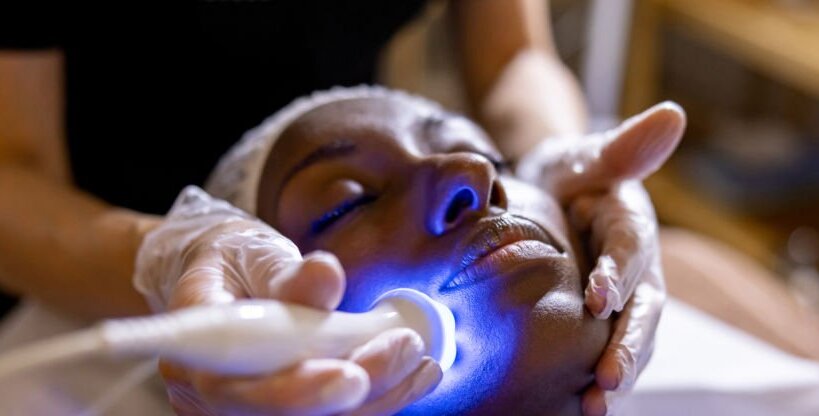
LED light therapy, the transformative skincare treatment that has emerged, harnesses the power of various wavelengths of light to address different skin concerns.
Whether you’re aiming to reduce wrinkles, calm inflammation, or enhance overall skin health, light therapy offers targeted solutions to add to your skincare routine.
What is light therapy?
Light therapy, also known as phototherapy, involves exposing the skin to specific wavelengths of light to stimulate cellular processes and improve skin health. This non-invasive treatment can be administered using various devices, including LED masks, handheld units, and specialized lamps. The key to its efficacy lies in the fact that different colours of light penetrate the skin at various depths, each offering unique benefits.
The light spectrum and its benefits
Red light (630-660 nm)
Red light therapy is one of the most popular light therapy for skin rejuvenation. It penetrates the skin’s surface and reaches the dermis, stimulating collagen production and improving elasticity. This makes it highly effective for reducing fine lines, wrinkles, and overall signs of ageing. Additionally, red light helps in improving circulation, which can result in a more youthful, radiant complexion.
Blue light (405-420 nm)
Blue light therapy is renowned for its ability to target acne-causing bacteria. It penetrates the skin’s surface to reach the sebaceous glands, reducing oil production and diminishing the presence of acne-causing bacteria without damaging the skin. This makes blue light therapy an excellent option for those struggling with acne or oily skin. Furthermore, it can help reduce inflammation and redness associated with acne.
Greenlight (525-550 nm)
Green light therapy is known for its calming effects on the skin. It works by targeting pigmentation issues such as hyperpigmentation, age spots, and redness. Green light helps to balance melanin production and can contribute to a more even skin tone. Additionally, its soothing properties make it a good option for sensitive or irritated skin.
Yellow/Orange light (590-620 nm)
Yellow light therapy focuses on improving skin texture and reducing redness. It stimulates lymphatic drainage, which helps to reduce puffiness and improve skin tone. Yellow light can also enhance the skin’s natural glow and assist in reducing the appearance of age spots and sun damage.
Infrared light (700-1200 nm)
Infrared light penetrates deeper than visible light, reaching the subdermal layers of the skin. It promotes healing and recovery by improving blood circulation and cellular regeneration. Infrared light is beneficial for treating deeper tissue damage, reducing inflammation, and promoting overall skin health and resilience.
Incorporating light therapy into your routine
Integrating light therapy into your skincare routine can be straightforward and effective. Many at-home devices are available for personal use, offering various settings and wavelengths. For optimal results:
- Consistency is key: Regular use is essential to see noticeable improvements. Most treatments require several sessions per week.
- Follow instructions: Adhere to the guidelines provided with your light therapy device to ensure safe and effective use.
- Combine with skincare: Light therapy can be enhanced by using it in conjunction with a good skincare regimen, including cleansing, moisturizing, and sun protection.
Compiled by: Amy Steenkamp
First published by Woman & Home




